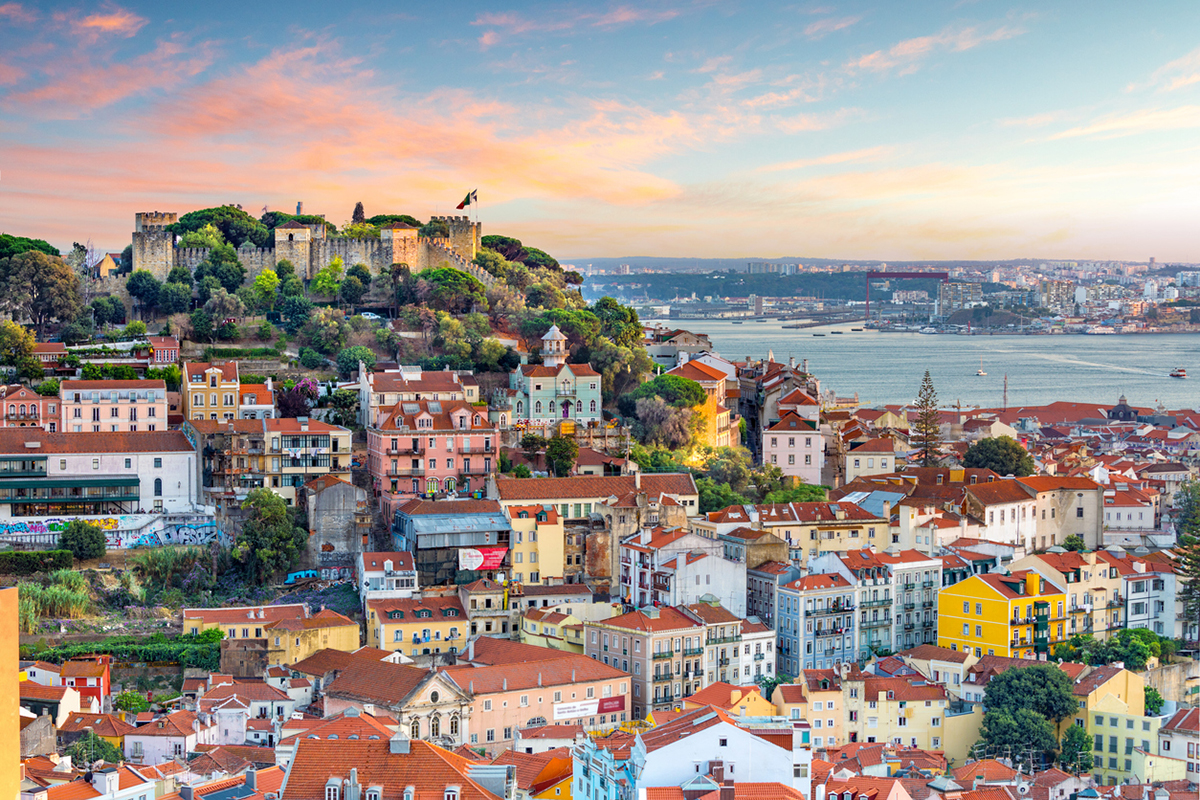Are you interested in visiting Lisbon in winter? It’s one of my favourite cities in Europe (if not my favourite!) – and I actually prefer it in winter than summer! Read on to find out why!
Whenever I land in Lisbon, I immediately feel completely enamoured.
The colourful winding streets of the Alfama area with rickety trams clattering through, the bright blue azulejos landmarking every building, small cafes serving pasteis de nata and hot coffee and the broad Praça do Comércio that gives way to the Tagus Estuary… it’s a city with something for all the senses.
Like most of Portugal (and Southern Europe), Lisbon is a popular place to visit during the summer season.
But in these months, the city is incredibly warm and ridiculously packed; so it can actually be quite an uncomfortable time to travel.
Enter: Lisbon in winter.
The gorgeous city is perfect in the cooler months when temperatures comfortably sit around 15-20 degrees celcuis/ 59 – 68 degrees Fahrenheit.
While the winter is definitely rainier than the summer, Lisbon still has plenty of clear days. In fact, it’s the ideal European winter sun destination!
What’s more, prices drop in the cooler months and there are far fewer crowds, enabling you to have a much more local experience in the city.
Lisbon truly is a year-round destination.
If you’re interested in exploring the capital of Portugal in winter, read on!
What’s Lisbon like in winter?

In my opinion, Lisbon is the hippest capital city in Western Europe, and it remains so during the winter as well!
Lisbon is the sunniest capital city in Western Europe, so it goes without saying that it’s not too cold during the winter months.
While the Portuguese capital isn’t roasting in the winter months, it’s fairly common for temperatures to be warm enough to sit outside and enjoy lunch or walk around wearing a t-shirt.
You probably won’t be sunbathing or swimming in the sea, but it’s definitely warm enough to check out all of Lisbon’s best attractions!
Plus, there are a few festivals with street parties and plenty of opportunities to get involved in local life.
And you can forget about summer prices – Lisbon is a great value destination in the winter months.
Here’s a breakdown, month by month.
Lisbon in November
Lisbon can be quite quiet in November, but it still has mild weather and attractions stay open.
Expect highs of 18°C/ 64°F and lows of 12°C/ 54°F, with plenty of gorgeously sunny days.
The sea temperature in November is around 19°C/ 66°F – which is just about warm enough for some people to take a dip!
By the end of the month, the Christmas spirit arrives with the start of the holiday season!
Lisbon in December
Lisbon’s Christmas markets and other festivities open at the beginning of the month, and they bring a sense of seasonal cheer to the Portuguese capital.
Tourists from Northern Europe and North America often find it strange that the city is so Christmassy without the cold weather though!
Expect temperatures ranging from 15°C/ 59°F to 9°C/ 48°F.
December is the wettest month in Lisbon, so don’t forget your rain jacket. However, there are usually only 10 days or so of wet weather.
Lisbon in January

Although January is the coldest month in Lisbon, the city never really gets winter weather.
Officially, the temperatures are between 15°C/ 59°F high and 8°C/ 46°F low.
However, I was in Lisbon in January, the middle of winter, and temperatures reached up to 17°C/ 63°F and it was really sunny.
I was able to walk around wearing a t-shirt in the daytime, it was so gorgeous!
In the evening, it got quite a bit cooler. This is generally the coldest month of the year.
Lisbon in February
Despite Lisbon never reaching freezing temperatures, they begin climbing again in February!
Expect temperatures from around 16°C/ 61°F high to 9°/ 48°F low, and fewer rainy days.
This is also a quieter month in the city, but it’s the perfect time to enjoy an often very busy European capital in blissful solitude – you’ll feel as if you’ll have the narrow streets completely to yourself.
Lisbon in March
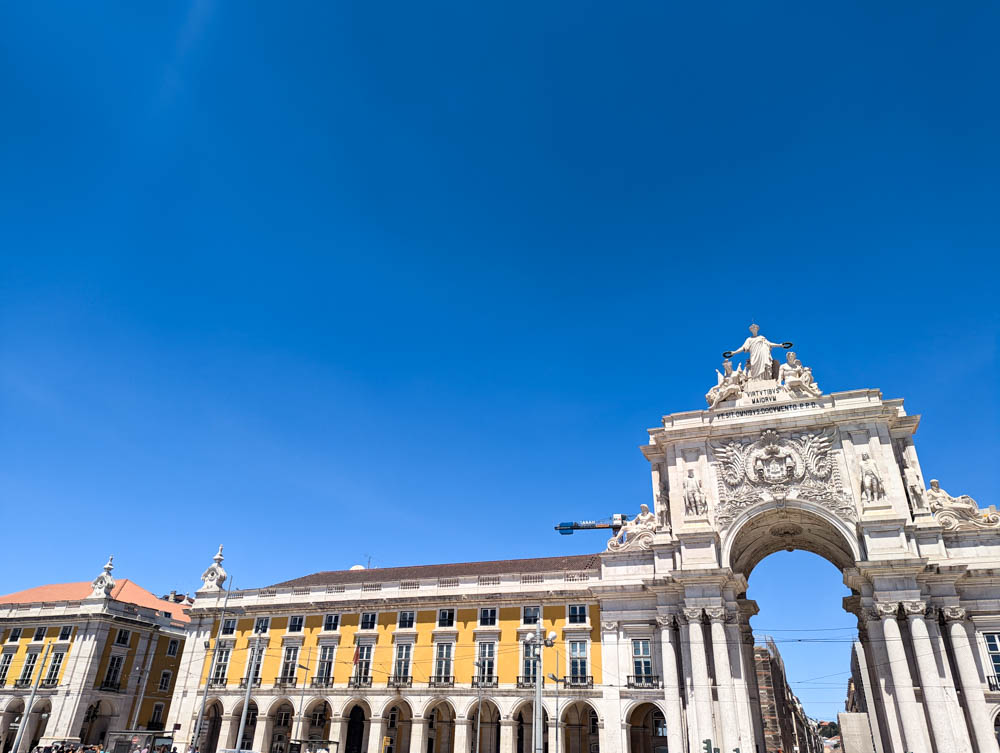
March is a beautiful time to be in Lisbon.
Temperatures officially reach 18°C / 64°F, although don’t be surprised if the thermometer creeps higher, especially later in the month!
You can still enjoy cheaper prices and no summer crowds, but it might even be warm enough for seaside activities and a spot of sunbathing!
Things to do in Lisbon in winter
The best things to do in Lisbon in winter include wandering around the festive market, checking out its best museums and enjoying its winter sunshine by getting lost in its winding city streets (exploring in winter is much more pleasant than the sweltering summer!). You could even take a day trip to Sintra or Cascais!
Lisbon Christmas Market
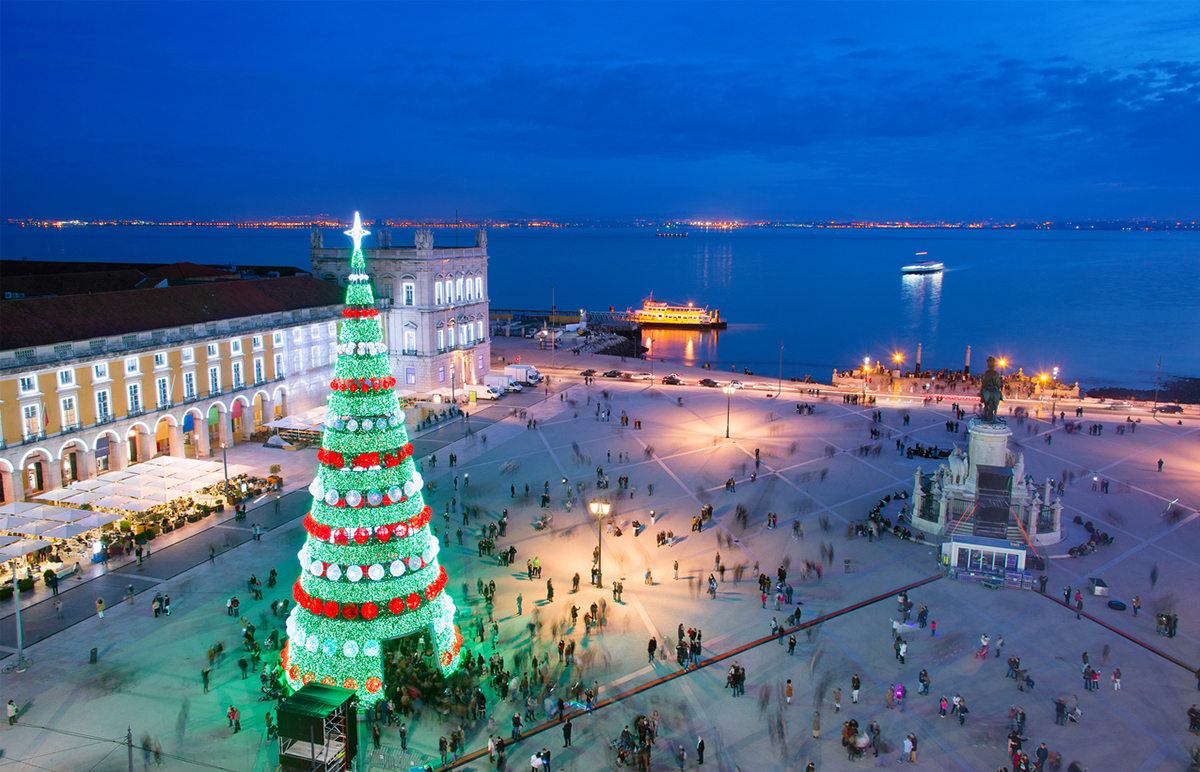
You’re very unlikely to see snow or taste gluwein in Lisbon Christmas Market, but its festive markets are still well worth visiting!
There are actually a few Christmas markets dotted all over the city, including Rossio Christmas Market and the nearby Mercado da Baixa.
Visit to sample local festive food, like roasted chestnuts and Christmas cake.
There’s no mulled wine, but you can sip on sangria as you browse!
The Lisbon Christmas Markets are excellent places to go Christmas shopping too.
Purchase craft items and handmade trinkets, ideal for souvenirs or gifts!
Ice rinks in Lisbon
Despite the temperatures staying mild, there are a variety of ice rinks available during the festive season and throughout the wintertime.
Check out Wonderland Lisboa Christmas Fair!
Snap a photo at the Instagrammable Pink Street

The pink street in Lisbon – named after the fact that it is literally painted pink – is a famous photo spot in the city.
Officially called Rua Nova do Carvalho, it used to be a seedy destination lined with gambling businesses and brothels.
Nowadays, it’s painted pink – this was purely to try and boost the profile of the street and get rid of its seedy reputation!
This has largely worked – although it’s still a popular nightlife venue in the capital!
Check out the Basilica da Estrela

Dating back to the later 18th century and one of the most prominent churches in Lisbon, Basilica da Estrela was constructed by Queen Mary I.
She ordered it to be constructed when she became pregnant as she wanted to celebrate.
Sadly, the child died before completion, and the basilica nowadays is home to the tombs of Queen Mary I and her child, Prince Dinis.
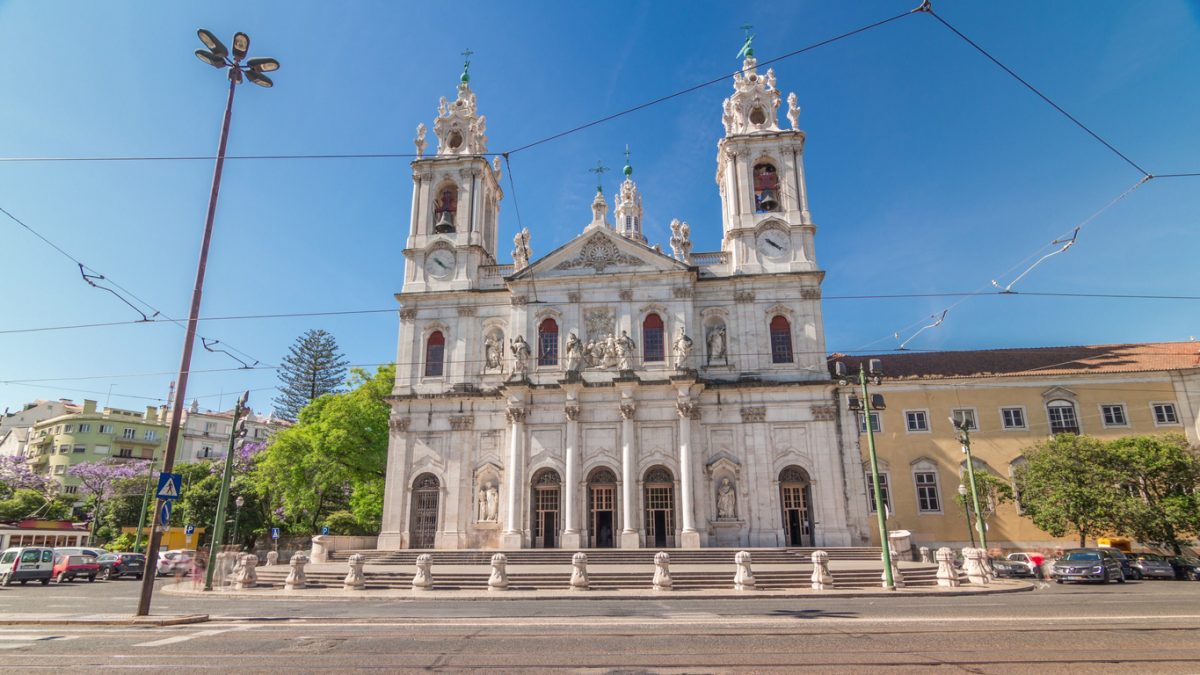
Nowadays, the Basilica boasts impressive French Baroque and Neoclassical architecture.
It’s a wonderful spot to take in Portuguese religion!
Take a self-guided walking tour
One of the best things to do in Lisbon in winter is to take one of the Around walking tours in Lisbon.
You’ll visit all the best sights in the Portuguese capital on a tour run by professional guides.
This is great for the winter, because if the weather turns you can take shelter indoors – you’re not under any pressure to follow a tour guide.
Climb up to a Miradouro
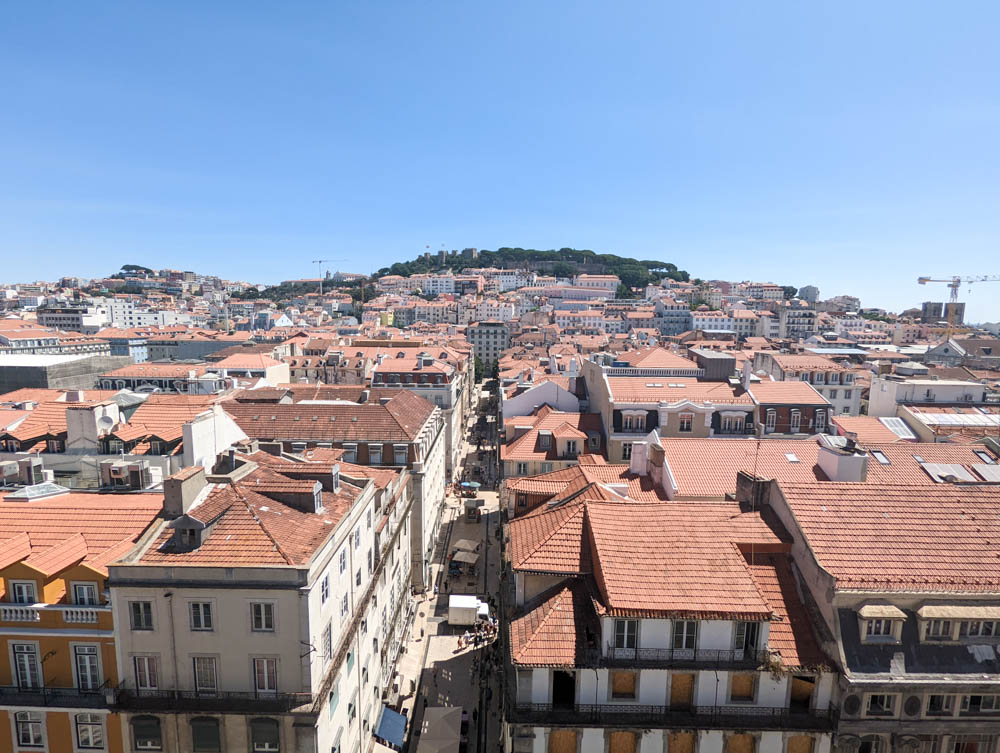
Lisbon is famous for its glorious Miradouros. It’s a city that’s been built on seven hills, with the old city in the middle of the valley.
Viewpoints are dotted all over each of the hills. You might have to climb over a steep street to reach them, but trust me, the view will be worth it!
Here are some of the best:
- Miradouro das Portas do Sol: One of the best places to see Alfama rooftops and the historic centre leading down to the water.
- Miradouro da Graca: This lookout has far-reaching views over to the castle.
- Castelo de Sao Jorge: One of the best viewpoints is from the top of the castle itself!
Explore the Alfama Neighbourhood
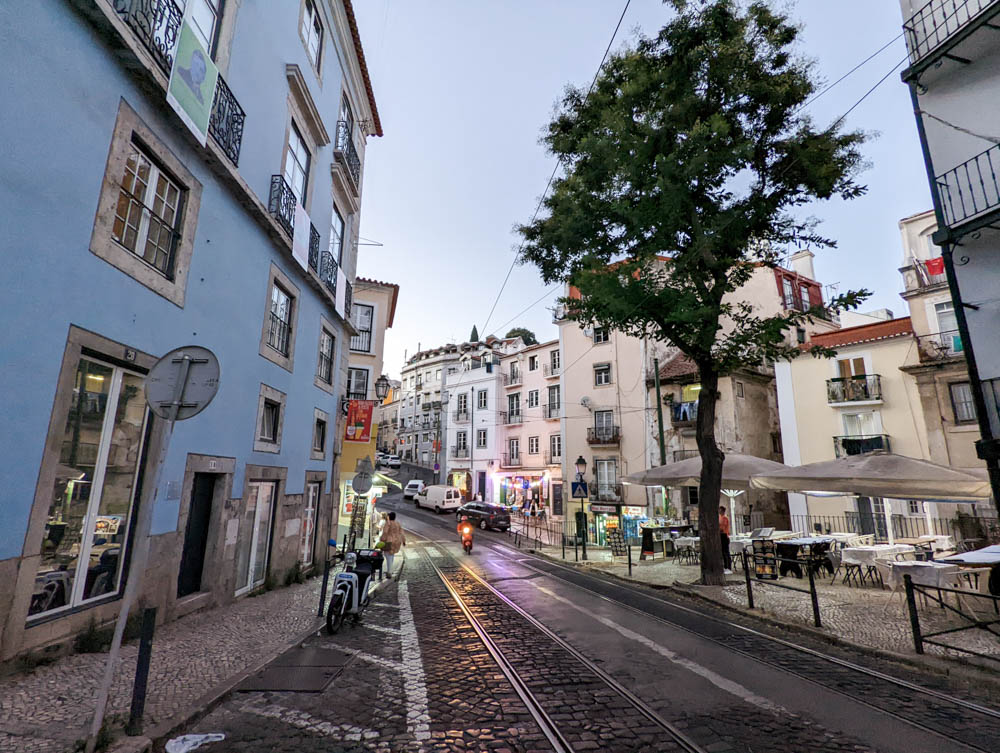
Lisbon’s Alfama neighbourhood is possibly the trendiest in the entire city.
It’s the only neighbourhood that wasn’t destroyed in the 18th-century earthquake that rocked the city, which means that it’s the most historic area of Lisbon.
Alfama used to be known for its poverty, frequented by Portuguese sailors who tended to spend their time on the mainland gambling and visiting brothels!
Nowadays, the days of this are long gone. It’s a fashionable area with charming historic buildings, hidden cafes and winding streets.
Take a walk around the region and see what you find!
Praca do Comercio
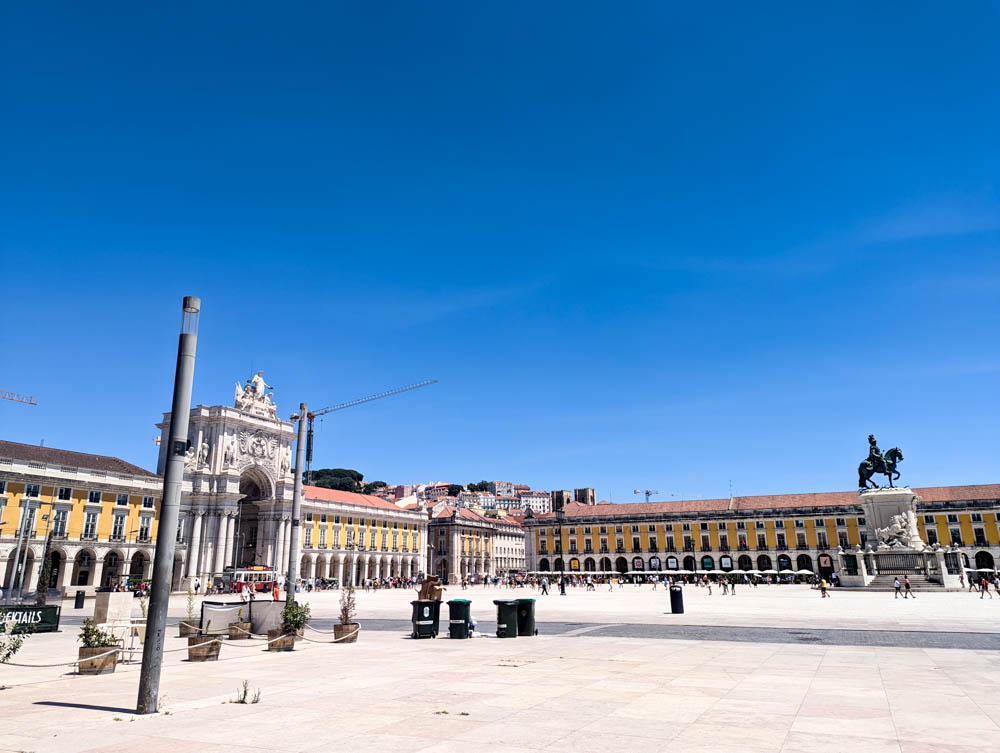
Praca do Comercio is the centre of the newer area of Lisbon.
A huge square with a lot of history, it was rebuilt after the 18th century earthquake.
It’s lined by bright yellow buildings and has a statue of King Joseph I in the centre.
He was the king during the earthquake and fled the city, and it’s thought that the sculptor was pointing out how he deserted the capital by showing him riding away from the city and putting him on a pony that was unsuitable for battle!
The square was also where the Portuguese dictatorship peacefully ended in 1974.
Nowadays, there are lots of restaurants lining the square – some may be closed in winter – and it leads to beautiful views of the Tagus.
Take Tram 28

Weather not so great?
Tram 28 goes through Estrela, Sao Bento (the Portuguese Parliament Building!), and then on into Graca where it becomes more residential as opposed to touristy areas.
If there’s rain forecasted just know that these trams can get really crowded, so plan accordingly!
Browse the Lisbon Flea Market
The Lisbon flea market is a great place to visit on the weekends.
It has been around since 12th century and continues today as one of Europe’s oldest markets with over 150 stalls selling anything from antiques, vintage clothing or furniture (and even some food), toys for children – you name it!
Take a SANDEMANs walking tour
Lisbon is one of Europe’s most fascinating cities, and there are so many ways to explore it.
SANDEMAN’S offers free walking tours that will give you a good overview of the city – check them out here!
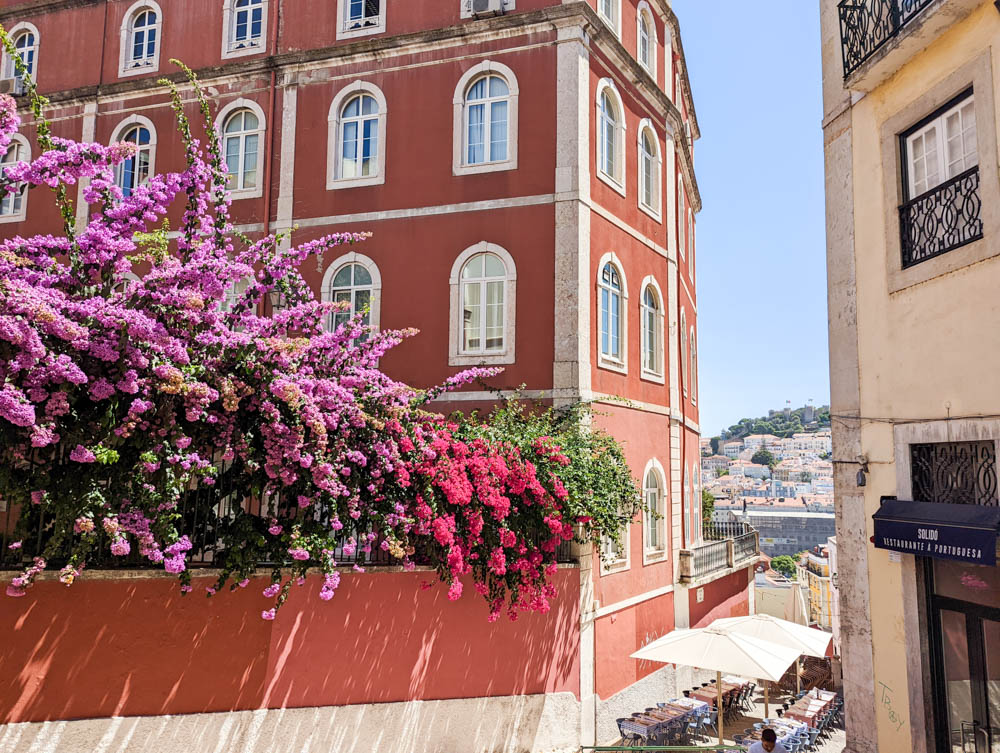
They also offer paid-for trips around other areas in Lisbon (like Sintra).
Winter surfing in Lisbon
Lisbon’s great for surfing, thanks to its position on the dramatic Atlantic Ocean.
In the winter, along with the cooler weather, the waves can be much more dramatic.
It’s more appropriate for intermediate surfers, but even if you’re a beginner, you can take a winter surfing lesson in the city.
Fado Concert
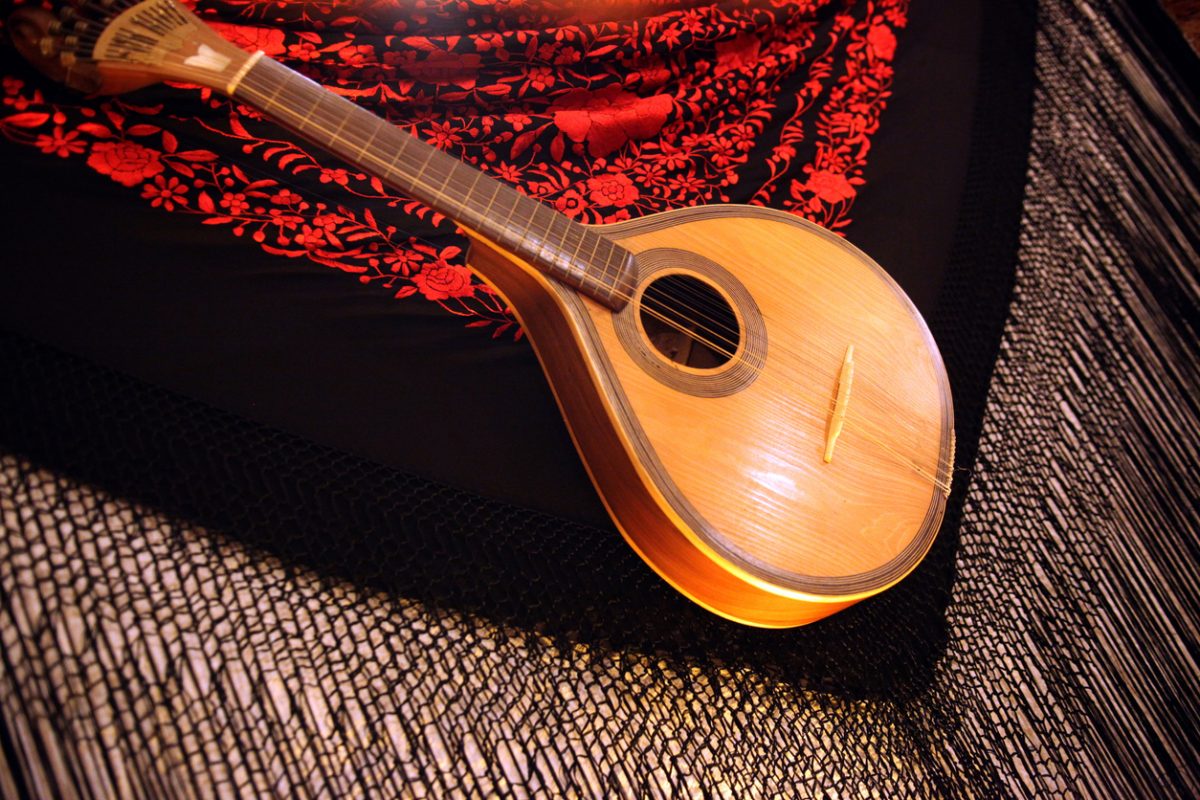
Fado is Portugal’s traditional music, and one of the best things to do in the capital is to head to a Fado Concert, which run year-round.
This is also one of the best indoor activities in Lisbon!
You can book tickets by clicking here.
Rooftop bars

There aren’t many places in Europe where you can take a winter trip and hop around rooftop bars, but the winter rooftop bar scene in Lisbon is getting increasingly popular!
Share a bottle of wine with your travel mates, or sip on an espresso martini as you take in some of the most epic views of the city.
Carmo Convent
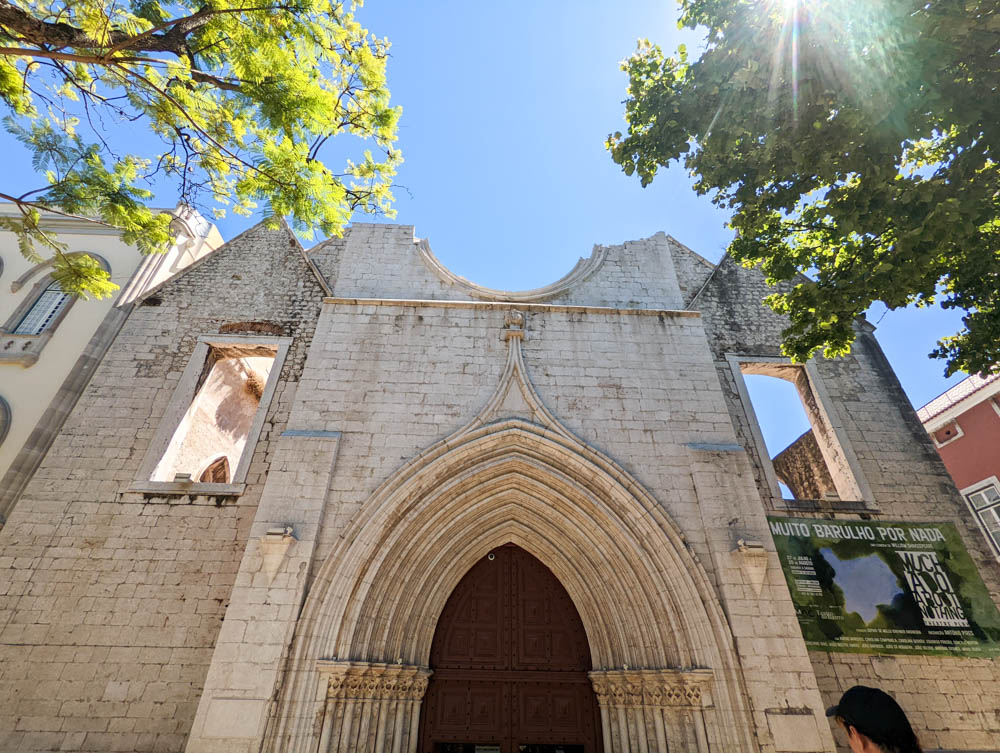
In 17XX, Lisbon was hit by two tremors and then a catastrophic earthquake, which experts think would have measured nine on today’s Richter Scale.
Then, a tsuami devastated the beach area of the city, and finally, wind carried fire through the city – it was quite literally destroyed by earth, wind, water and fire.
The only region that wasn’t destroyed was Alfama; nowadays known as Lisbon’s coolest neighbourhood, but then thought of as an ungodly area, where sailors would come after landing in Lisbon and engage in drinking, gambling and prostitution.
In Carmo Convent, the roof was completely ripped off and the building was in ruins.
This situation caused a lot of surviving Lisbon locals to have moral questions, wondering why God spared the unlawful sailors and took the lives of so many people who were praying.
This was at the start of the Englightenment Age, and many philosophers used Lisbon as an example.
When Lisbon was rebuilt, the town planners decided to leave Carmo Convent as it was, with no roof and in ruins, to remind people past and present what a horrific incident the earthquake of the 18th century was.
Santa Justa Lift
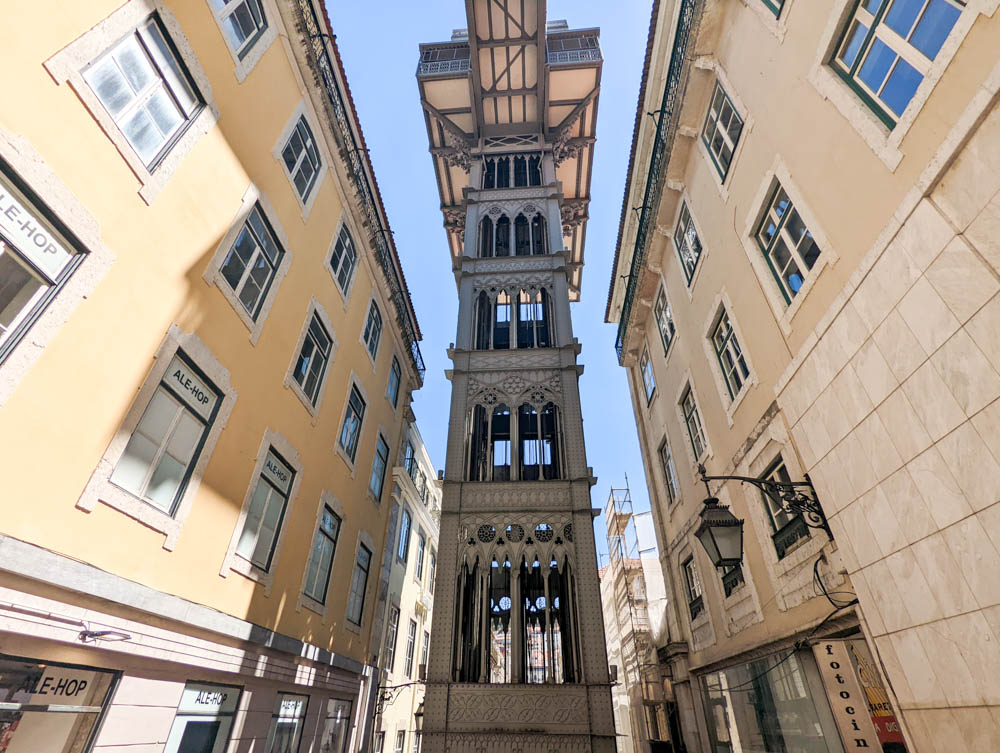
The gothic Santa Justa lift ascends up one of Lisbon’s steepest hills, up a whopping seven flights! Dating back to 1896, the lift is an architectural marvel and many tourists have it on their Lisbon bucket list.
However, don’t pay full price for it! It costs a whopping 5.30 to ascend the lift, but if you go to any metro station and buy a day transport card for around 6, you can go up as part of that – and it covers your transport for the rest of the day.
The epic view from the Santa Justa Lift is worth the trip, but if you don’t want to pay for it, you can also reach the top by walking. Click here to see a Google map of the area!
Try Portuguese Brandy
Ask someone to name a drink from Portugal and 99% of the time, they’ll say port wine.
Port wine heralds from Porto, about three hours away from Lisbon, but there’s another alcoholic beverage that you can sample Macieira, Portuguese brandy.
One of the best places to try it is the tiny Ginjinha Sem Rival bar.
Lisbon’s best museums
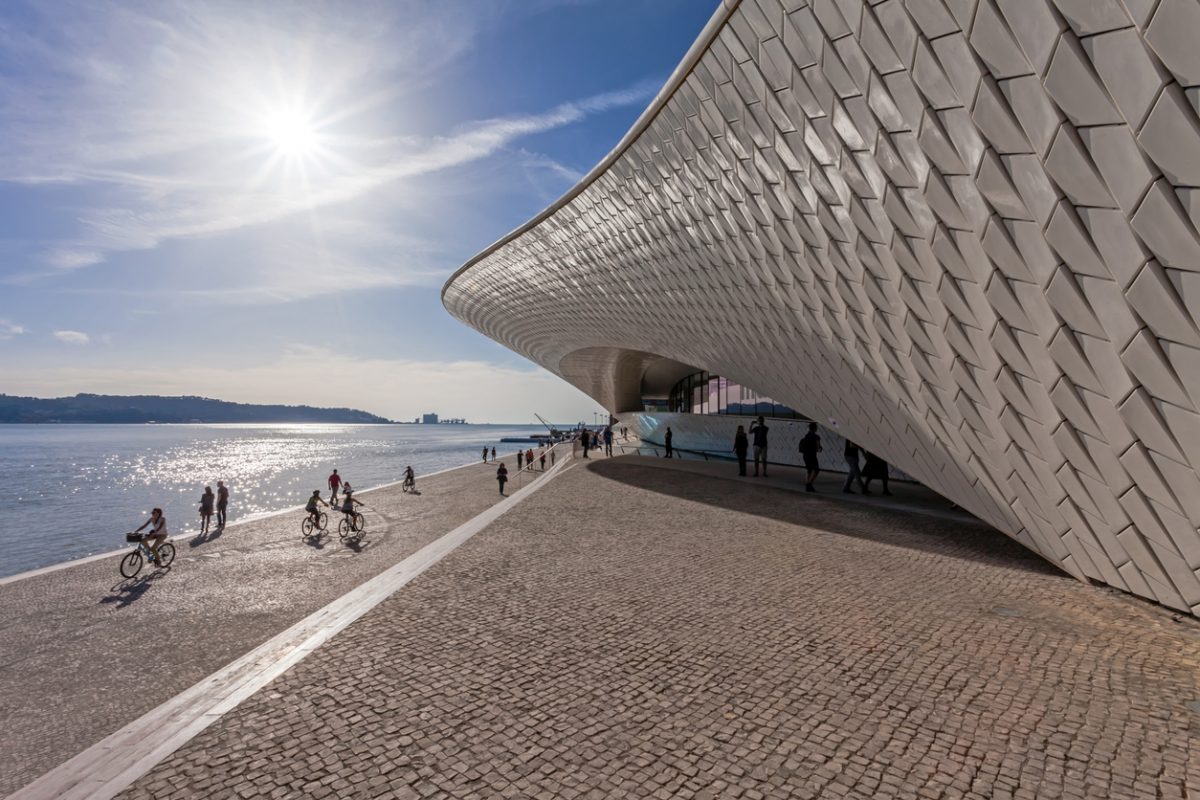
If you do experience bad weather while you’re in Lisbon, there are plenty of museums to enjoy! Here are some of the best:
- MAAT: This museum focuses on art, architecture and technology and hosts some thought-provoking exhibitions.
- Museu de Lisboa: This is a city museum where you can learn all about the capital’s past!
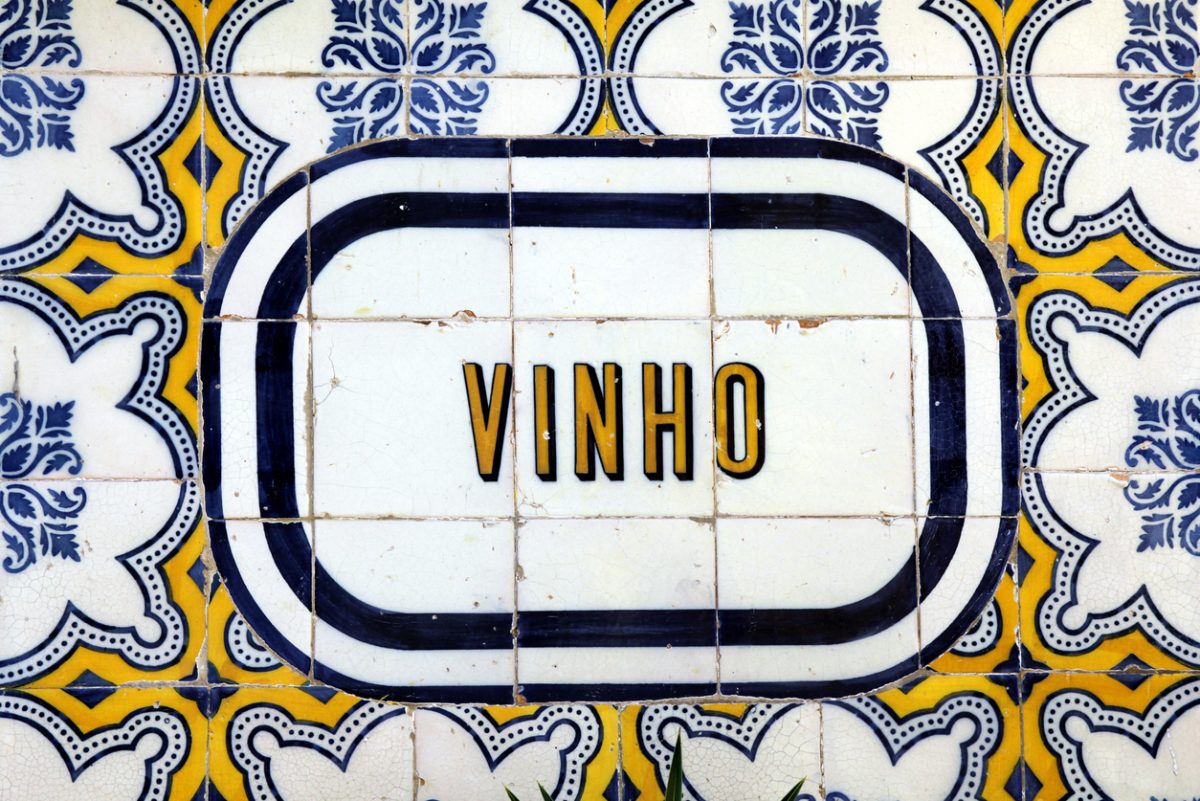
- Museu Nacional do Azulejos: As you walk around Lisbon, you’ll see bright blue tiles everywhere. These Portuguese tiles are actually Moorish, but they’re nowadays synonymous with the capital!
- Fado museum: If you want to learn all about Portugual’s favourite music, check out this establishment!
- Museum of Aljube Resistance and Freedom: This museum focuses on the Portuguese dictatorship.
Belem Tower
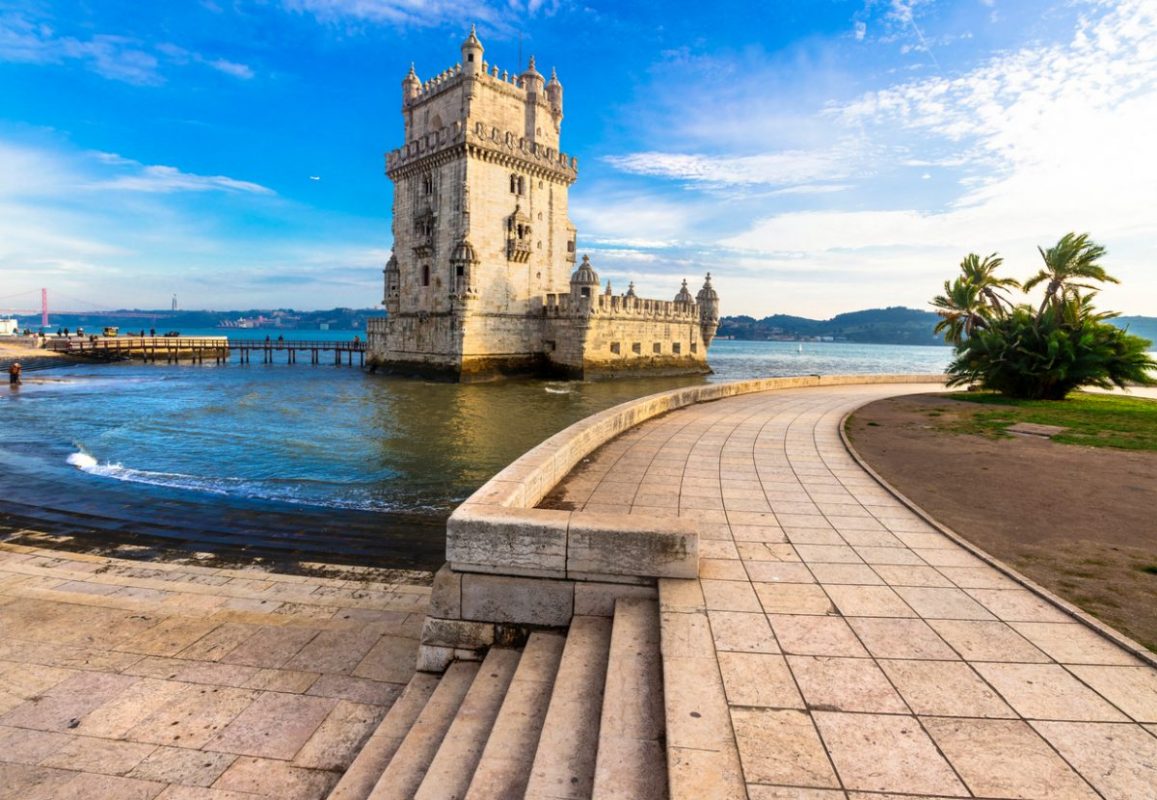
Belem Tower is a 16th century tower that looks out over the estuary and it’s where Portuguese explorers (and colonisers) embarked and disembarked from the capital.
It’s a UNESCO World Heritage Site and you can enter and explore the historical features. It’s also worth climbing up to the top and enjoying the views!
Pastéis de Belem

Portuguese pastéis de nata are potentially the most famous dessert in the country.
And they all started in this bakery in Belem, which is about a 10 minute train (or half hour tram ride!) from Lisbon centre.
Nowadays, this bakery has a takeaway counter and enough space to accommodate 250 diners.
But it hasn’t always been this way – it started as a small family-run stall concocting this custard tart recipe.
They still use the same recipe today, and only four people know it.
They keep it closely guarded, not even travelling with each other in case something happened to them all!
During the summer months, expect queues to get into Pastels de Belem.
It’s a lot quieter in the winter months, although it was still quite busy when I visited. I will say two things about this café.
1) I didn’t find the staff to be very friendly at all – we were waiting for quite a while to be served and we were very much dismissed by all the waitstaff.
2) while I can see why people like the tarts – the pastry is crispy and flaky and the filling rich and decedant – I personally hate the taste of egg, and these were very eggy.
Normally, I do like pastels de nata, so if you generally like a sweeter flavour rather than egg, you may want to bear this in mind.
But of course, that’s all subjective!
Day trip to Sintra
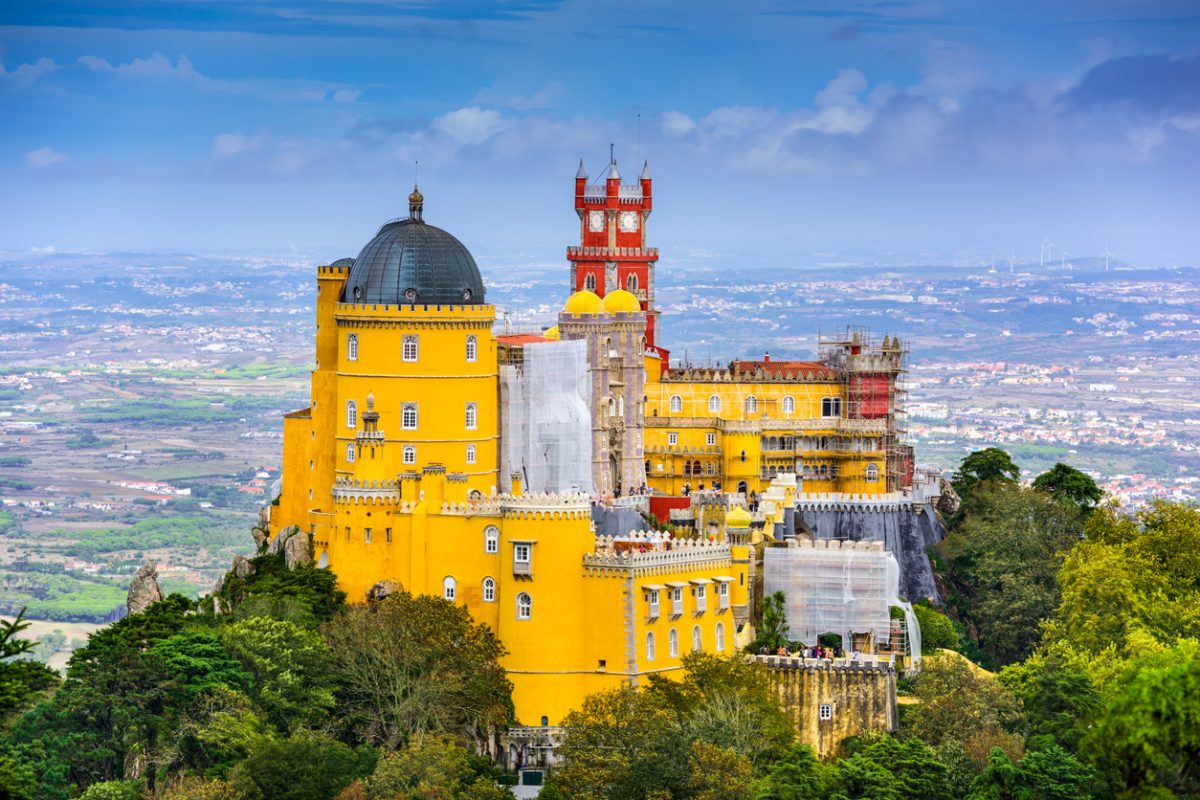
Sintra is one of the most famous landmarks in Portugal – and it’s a really easy day trip from Lisbon!
Dating back to the 15th – 16th century, the castle at Sintra was constructed on the site of the Sintra Moorish alcazar.
Nowadays, it’s a UNESCO World Heritage Centre and one of the most magical fairytale castles in Portugal.
It was the first centre of European romantic architecture and is nowadays one of the icons of the country!
You can either do a guided tour, like this one, or take the train there independently.
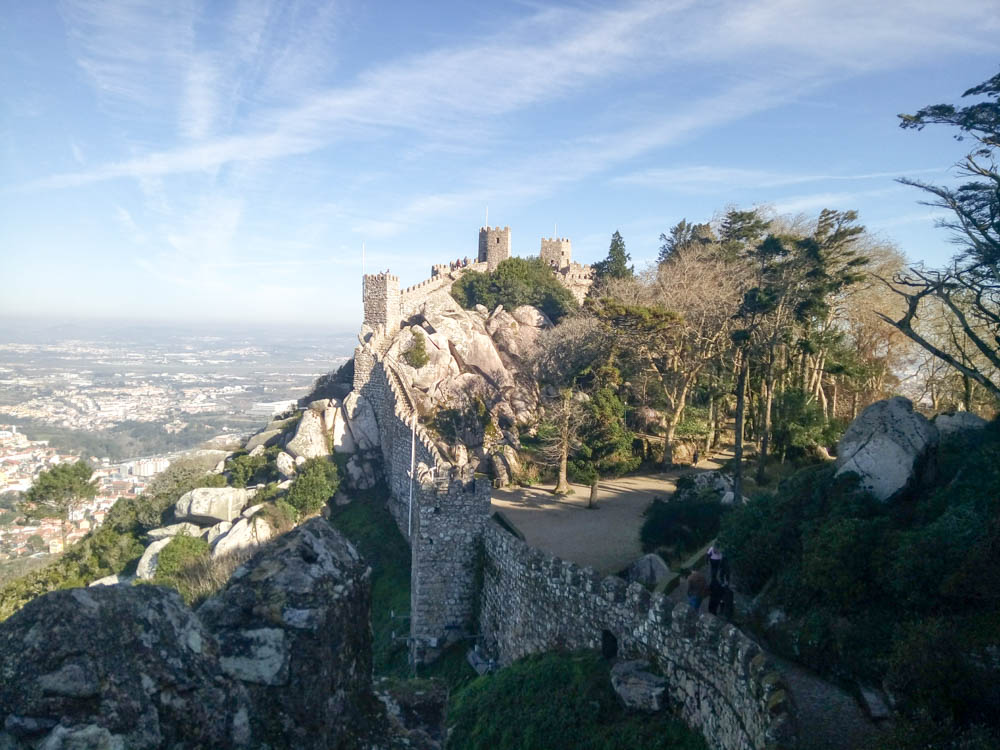
The town is also lovely and relaxed, with plenty of cafes and restaurants to enjoy.
Visit Cascais
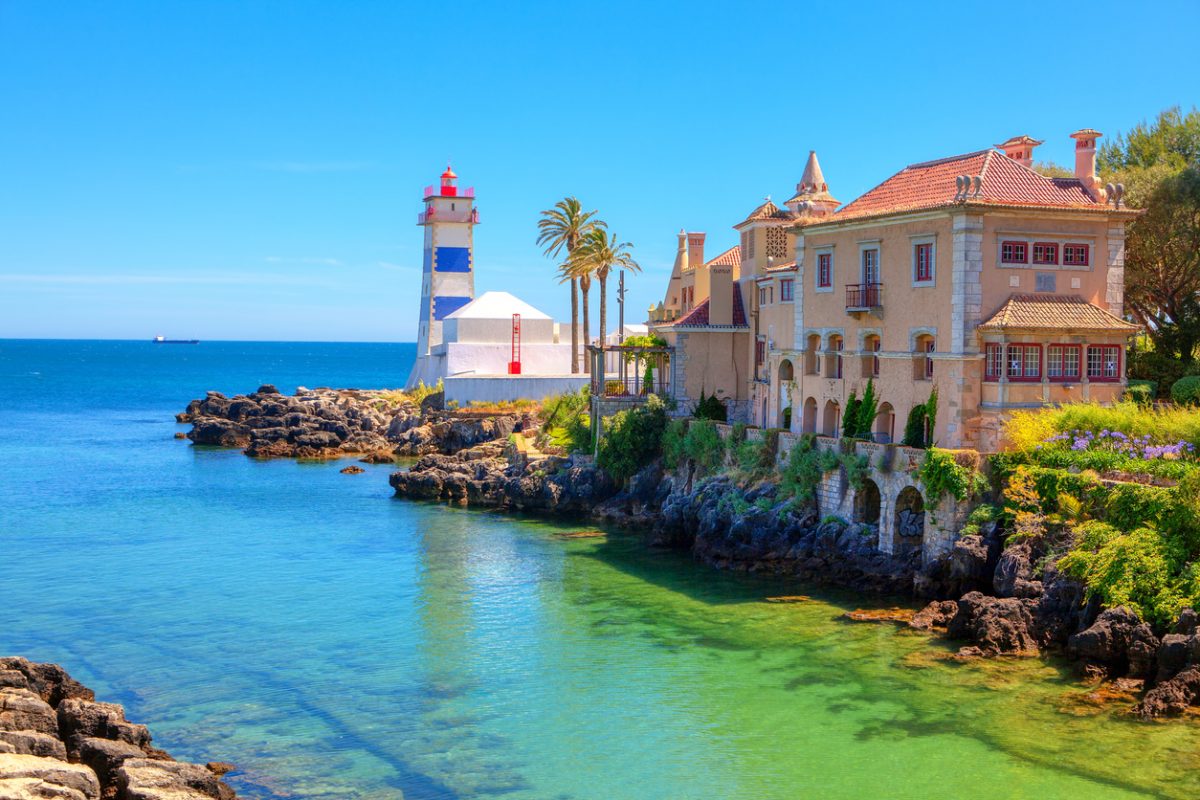
While Lisbon does have city centre beaches, you can easily take a train to Cascais and enjoy the beach town.
Of course, you won’t be sunbathing in the winter, but Cascais is a charming town to walk around. There’s urban art, second-hand book stores and The House of Wonders, a popular vegetarian restaurant.
Plus, don’t miss Boca do Inferno, a craggy rock arch that you can visit year-round!
Take in views from Cabo da Roca
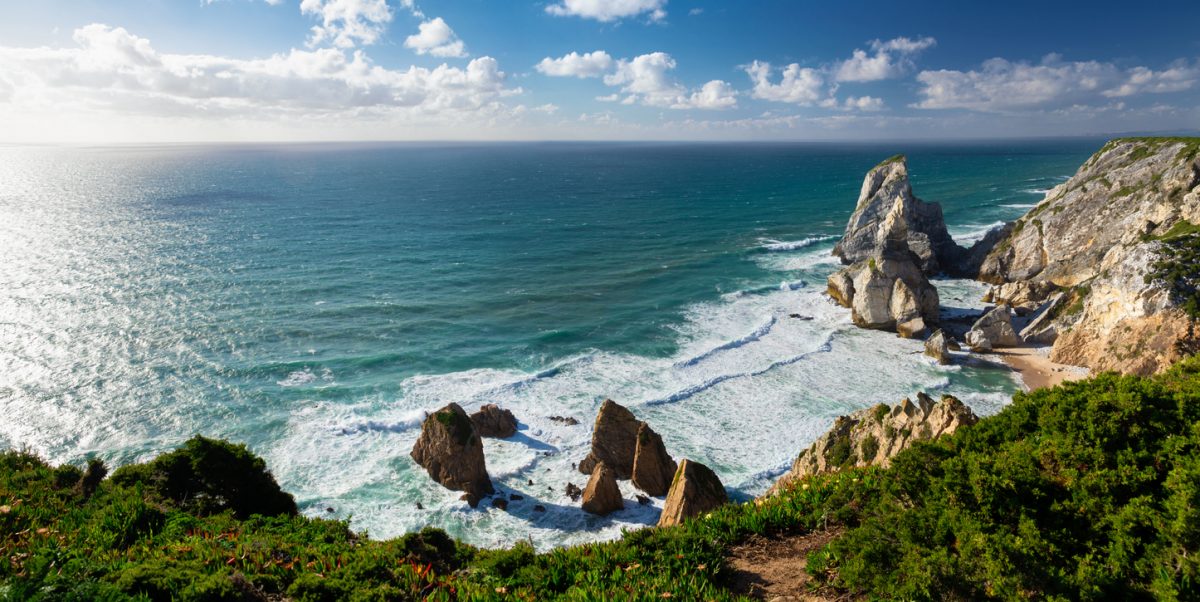
From Cascais, head north to the dramatic Cabo da Roca, which is the furthest west point on the European mainland.
It’s an epic place to just stand and enjoy the crashing Atlantic waves. There’s also some lovely coastal walks that you can take in in the area as well!
Do a Lisbon food and wine tour
If you want to learn more about Lisbon’s culinary scene, this food and wine tour will take you around the city.
One of the main foods to try is bifana, a pork sandwich, and it also traverses the food markets.
Also, try port wine and more local varieties!
You can read about the food and wine tour here.
Tagus River Sunset Tour
Take in a gorgeous Portuguese sunset by embarking on this cruise on the Tagus River.
Lisbon is best seen from the water – it was made to be seen from the water – and you’ll sail from the centre to the Tower of Belém, enjoying some traditional food and drink along the way.
Click here to read more about this cruise.
Where to stay in Lisbon in winter

Estrela Guesthouse is a beautiful place to stay, with huge windows washing the room in natural light and a minimalist design. It’s highly rated on booking.com, but it also one of the cheapest places to stay in Lisbon! Click here to read more about it.
Moxy Lisbon City is a funky hotel to stay at in Lisbon. It has modern rooms – they’re simple in design, but have all the mod cons that you’ll need, and contemporary bathrooms with rain showers. Check out the pool on the roof too! Read more by clicking here.
Browns Avenue Hotel is one of the highest-rated luxury hotels on booking.com in Lisbon. Featuring comfortable beds with plush bed linen, bathrooms with roll-top baths and a swimming pool, this is the perfect place to rest and recharge after a busy day exploring the capital! Click here to read more about it.
How to get to Lisbon

Home to the biggest airport in Portugal, Lisbon is really easy to get to, even in the colder months!
TAP Air Portugal has its base in Lisbon, and other carriers like EasyJet also fly here frequently.
There’s plenty of domestic public transport too – you can easily get here by FlixBus or train from other destinations in the country, like Porto and Faro.
Most trains and buses live from Lisbon Oriente train station.
What’s Lisbon like at Christmas?
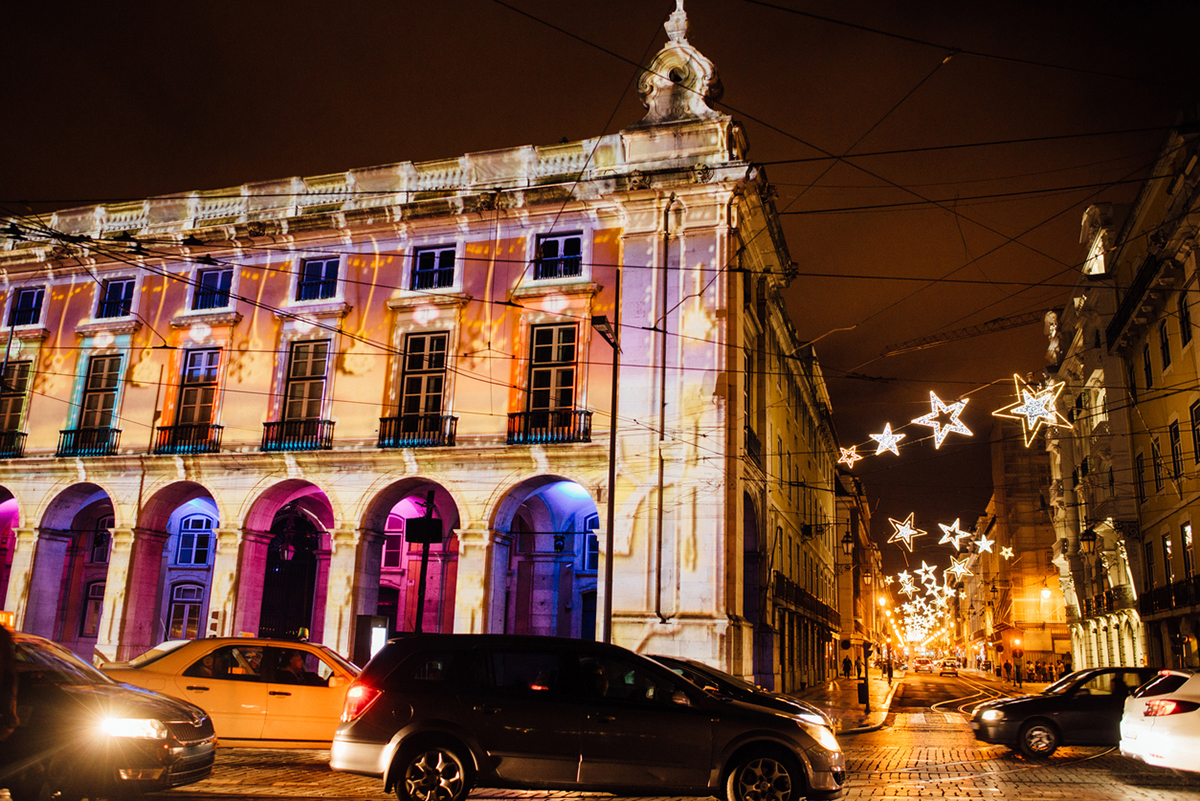
Lisbon comes alive during the festive period, but expect most businesses (apart from hotels!) to be closed on the 24th and 25th December.
If you’re in the city during Christmas, you should definitely try some traditional food!
Traditional food includes bolo rei, or King cake, which is a fruit cake in the shape of a ring.
It’s commonly eaten between Christmas day and January 6th (King’s day) in Lisbon.
For Christmas dinner, Portuguese people actually usually eat cod, despite it not being found in the waters around the city!
What’s Lisbon like in New Year?
Lisbon is a great place to spend New Year!
There are fireworks at Praça do Comércio and Belém, and you can also enjoy lots of smaller parties at bars and venues all over the city.
Where to eat in Lisbon
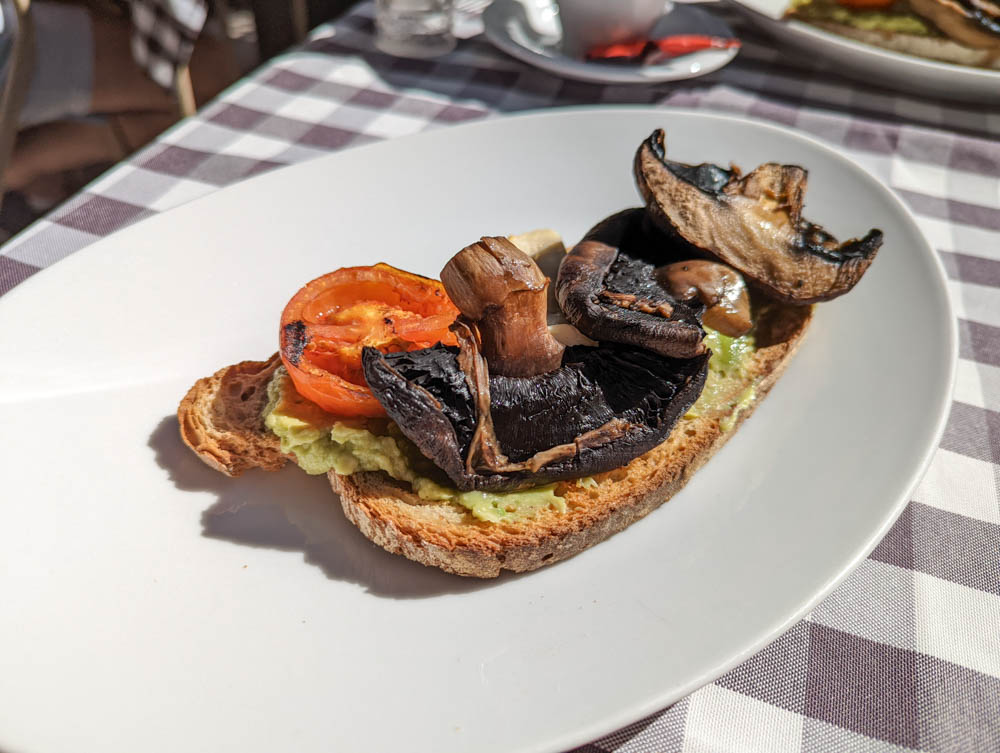
Lisbon has a great dining scene – although this is coming from someone who isn’t the biggest fan of Portuguese food (it’s not the most veggie-friendly of cuisines!).
Portuguese wine, on the other hand, I can drink all day – and most restaurants will have an impressive wine menu.
Still, I found some decent places to eat in Lisbon. Here are a few of my favourites:
Damas
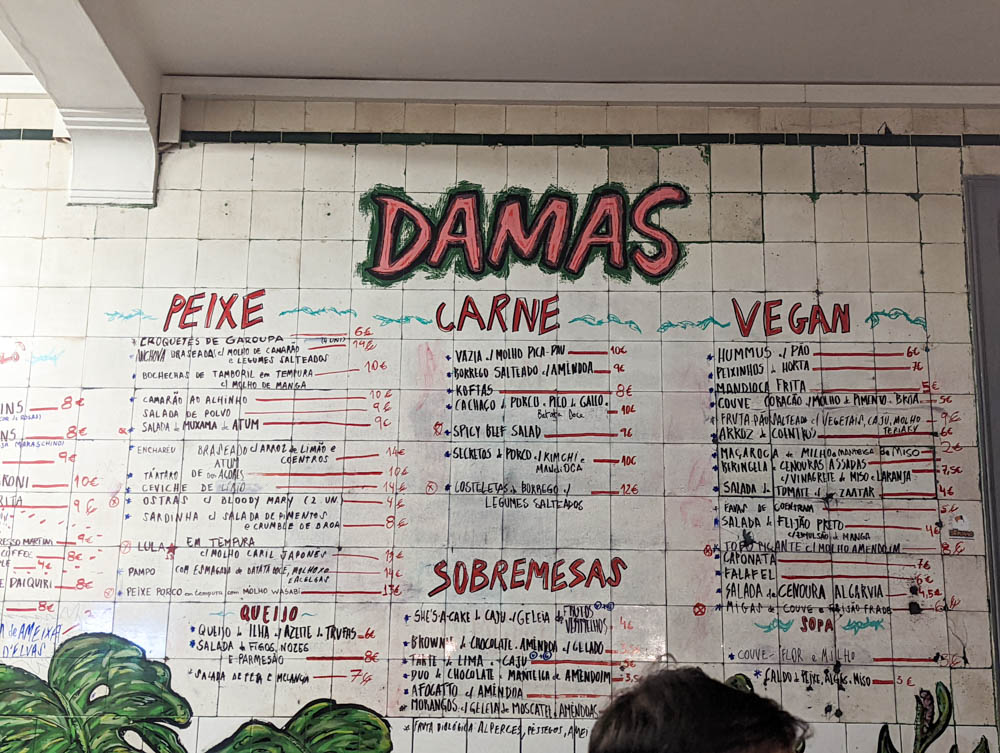
Damas is a quirky restaurant and bar serving delicious tapas and lots of different drinks. It has quite a rowdy atmosphere, especially later on in the evening, but we found it really welcoming and enjoyed the relaxed vibe. The food was incrdible too!
Bahr
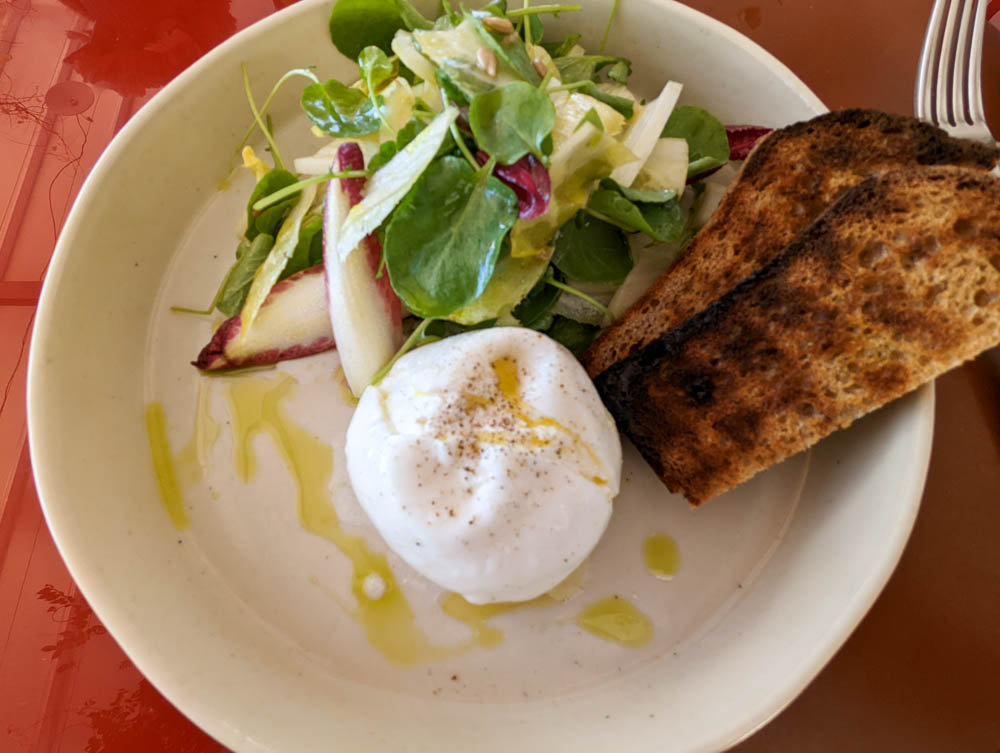
Bahr serves incredibly fresh food – this was Serra da Estrela cheese with salad – and has views over Lisbon’s skyline!
Audrey’s
I also loved Audrey’s for breakfast, a cute cafe in Alfama with a great veggie menu. Try to sit outside if you can!
What to pack for Lisbon
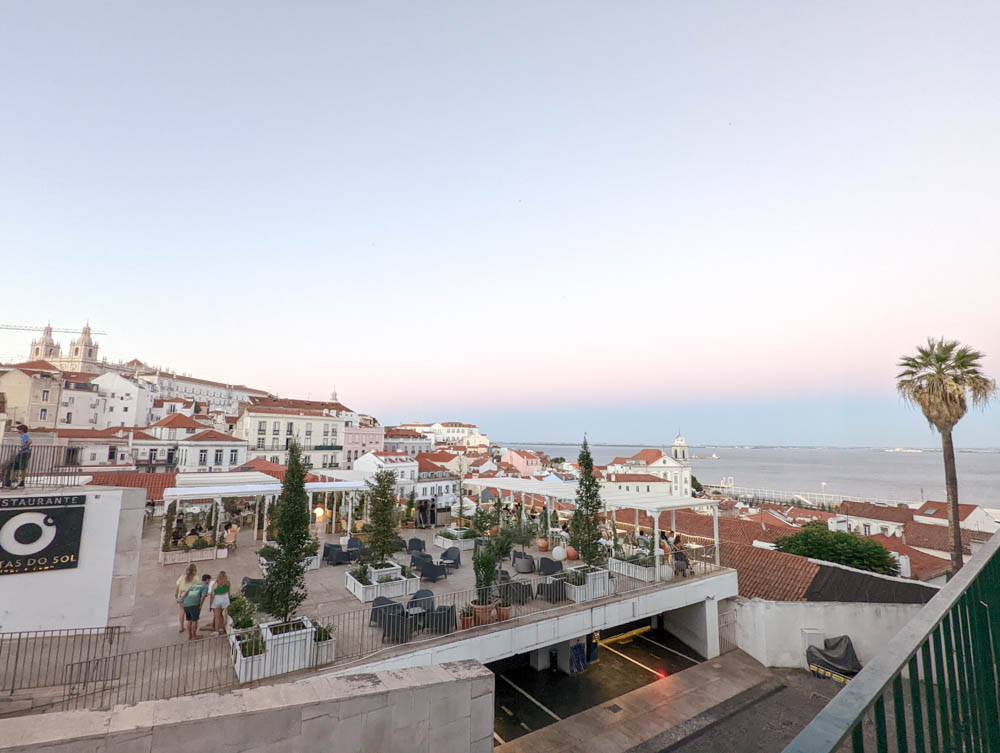
I’d recommend packing some warm clothes because while there can be lovely sunny weather, clouds are possible!
Sometimes, all you’ll need is a light jacket – and other times, you’ll be ok in a t-shirt. So be prepared with lots of layers.
You’ll need some comfortable shoes for walking around the city and a camera to snap all the best photos of Lisbon!
Don’t forget adaptors for EU plugs.
You can purchase any toiletries in Lisbon, so don’t worry if you have forgotten something – there are pharmacies all over the city. However, if you want a specific brand it’s best to take it with you!
Where to go from Lisbon

There are so many places that you can visit from Lisbon, even in the winter season!
Porto in winter is a bit chillier, but it’s still well worth visiting. It’s around a three-hour coach or bus ride from Lisbon.
If you’re looking for more heat, head over to the Algarve, where daytime temperatures can hit the low 20s, even in winter.
Alternatively, head to neighbouring Spain – Seville, Malaga, Granada, Barcelona, Madrid, Mallorca and even the Canary Islands are wonderful in the winter months!

